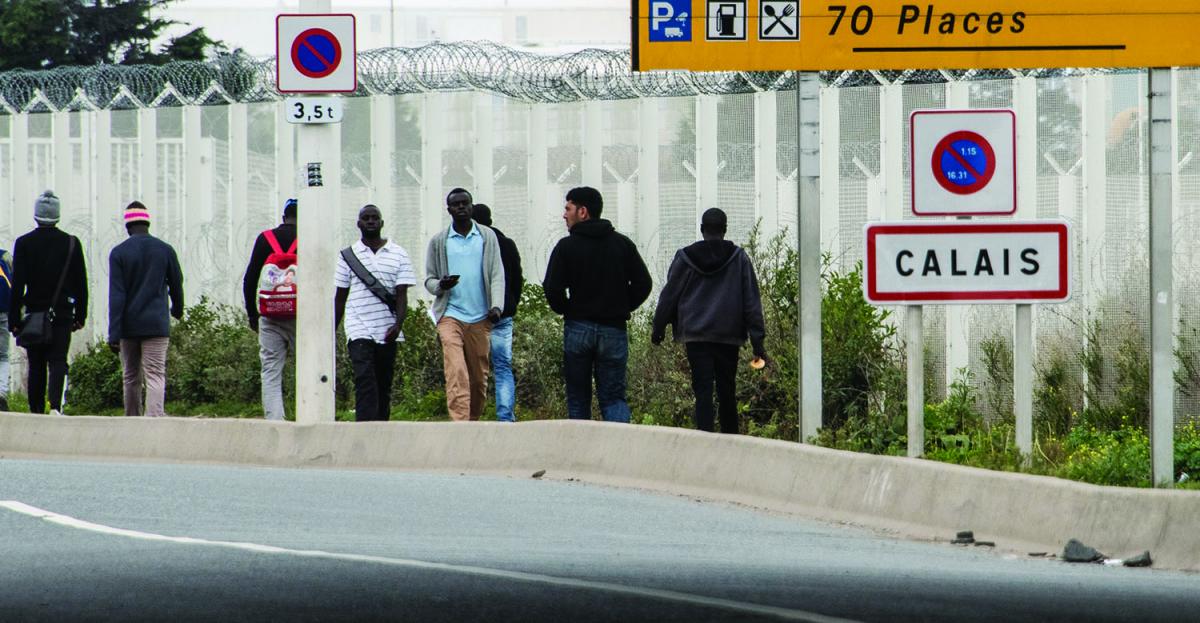
In 1976, French philosopher Michel Foucault described the advent of a new logic of government, specific to Western liberal societies. He called it biopolitics. It is a complex concept that has been used in social theory to examine the strategies and mechanisms through which human lives are managed under regimes of authority over knowledge, power, and the processes of subjectivation. With Foucault’s biopolitics as a springboard, Taïeb Berrada is examining Francophone literature and its relationships to addressing migration and immigration policies.
Berrada, associate professor of French and Francophone Studies in the department of modern languages and literatures, is using Foucault to investigate various aspects of illegal immigration in France by analyzing novels and films and critiquing the current postmodern and postcolonial interpretations of displacement and exile. The phenomenon of Harraga, where illegal immigrants burn their documents and cross borders between North Africa and Europe, has been the topic of a many literary and cinematic works. Berrada posits that the concept of borders has, itself, changed. It is more than geographic, and his current book project examines the ways in which these works help readers reconsider, reshape and redefine the notion of borders within which individuals as well as their bodies are confined to a space of “discipline and punishment” before becoming disposable commodities. These narratives about, or by, illegal immigrants constitute a “clandestine” argument that interrupts mainstream discussion regarding transnationalism and notes that these works demonstrate a need to reassess the idea of migration between France and North Africa, he says.
Berrada is comparing two ways in which people look at the world. On one hand is biopolitics and demographics, the other espouses the views of the oppressed. Berrada examines works that give voice to those who cannot speak and whose authors provide alternative views as to what constitutes borders. These narratives represent the details, the experience of harraga, bring to light a fragment of their journey and explore it with new meanings. He is particularly interested in the metonymic functioning of harraga narratives (a fragment or a part that refers to a whole): biopolitics as a representation of the whole (anonymous crowds of clandestine migrants crossing borders) vs harraga narratives as a representation of only a fragment of the whole but that generate a counter-discourse to biopolitics. By using this metonymy, it gives us an alternative or a contrasting view to biopolitics and therefore a political stance against dominant discourses on illegal migration.
“These works help me better understand the ideas surrounding immigration and the concept of borders, not in terms of geopolitical terms but rather a reconceptualization of borders. They are not aligned. They are more a set of networks. Borders are much more diffused. It’s more the experience of the border that counts the most. In a way, a border starts at home. Migrants lack political representation, so these narrative have replaced it.”
Berrada’s project is an expansion of work he addressed in his last book, La figure de l'intrus: représentations postcoloniales (The Figure of the Intrusion: Maghreb post-colonial representations). In that work, he addressed ideas surrounding immigrants as intruders. The intruder is an ambivalent figure of the relationship that occurs when a concrete or abstract subject or object is introduced and/or is designated and perceived as an intruder somewhere in a set, domain or series.






